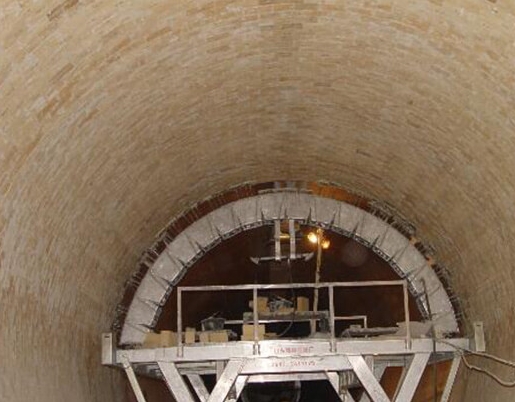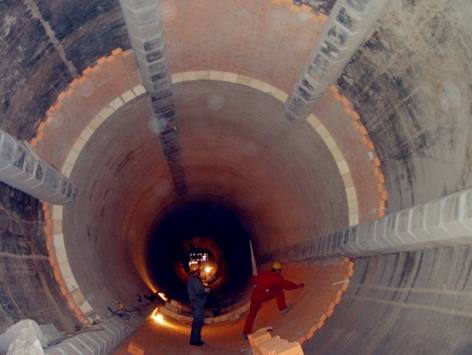- 21
- Dec
Precautions for masonry of rotary kiln
Precautions for masonry of rotary kiln
The operation rate of the rotary kiln (cement kiln) has a great relationship with the quality of refractory brick masonry. It must be carefully constructed in strict accordance with the technical requirements of refractory brick masonry. The specific requirements are as follows:
1. The cellar skin bonded to the brick lining should be cleaned up before construction, especially the place where the square timber is placed should be as flat as possible.
2. Tighten the brick lining in the horizontal and vertical directions with a screw and square wood; after determining the part that needs to be replaced, use the screw and square wood to tighten the remaining part.
3. When removing old bricks from the trench, pay attention to protecting the brick lining to prevent the sliding of the remaining brick lining. After rejection, a small steel plate is welded to the cylinder to prevent the brick lining from sliding.

4. Before the refractory bricks are built, the shell of the revolving cellar should be thoroughly and carefully inspected to clean the cellar.
5. When building, no matter what method of masonry is adopted, the masonry must be built strictly in accordance with the baseline, and it is strictly forbidden to build without laying the line. Lay out the lines before laying the refractory bricks: the base line of the cellar shall be placed along the circumference of 1.5m, and each line shall be parallel to the axis of the cellar; the circular reference line shall be placed every 10m, and the circular line shall be uniform. Should be parallel to each other and perpendicular to the axis of the cellar.
6. The basic requirements for bricklaying in the cellar are: the brick lining is close to the cellar shell, the bricks and bricks must be tight, the brick joints must be straight, the intersection must be accurate, the bricks must be locked firmly, in a good position, without sagging, and not falling out. In short, it is necessary to ensure that the refractory bricks and the cellar body have a reliable concentricity during cellar operation, and the stress of the brick lining must be evenly distributed on the entire cellar lining and on each brick.
7. Bricklaying methods are divided into two categories: ring masonry and staggered masonry. New cellars and cylinders are well-regulated and the deformation is not serious. Ring masonry is generally used; the cylinder deformation is more serious and the bricks used are of poor quality. In the cellar, the staggered masonry method can be used in the high alumina brick and the clay brick part.

8. When ring-laying, the ring-to-earth deviation is allowed to be 2mm per meter, and the length of a construction section is allowed to be up to 8mm. When staggered, the vertical deviation per meter is allowed to be 2mm, but the maximum allowable length of the whole ring is 10mm.
9. The last brick of each circle (except the last circle) is pushed in from the side of the brick lining (in the direction of the axis of the revolving cellar) to complete the entire circle of masonry, and pay attention to adjusting the brick type as far as possible not to use it. Dry-laid joint steel plates are generally 1-1.2mm, and the width of the steel plate should be about 10mm smaller than the width of the brick.
10. After the refractory bricks are built, all the lining bricks should be cleaned and fastened comprehensively. It is not advisable to transfer the cellar after the fastening is completed. It should be ignited in time and baked according to the drying cellar curve.
